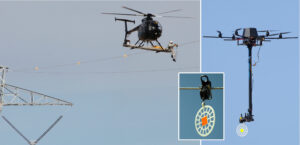Third International Scientific and Practical Conference “Eagles of the Palearctic: Study and Conservation”
Raptors Conservation. Suppl. 2. Proceedings of Conferences
Expanding Raptor Protection to Include Collision Prevention and Substation Management
Dwyer J.F. (EDM International, Inc., Fort Collins, Colorado, USA)
Contact:
James F. Dwyer jdwyer@edmlink.com
Recommended citation: Dwyer J.F. Expanding Raptor Protection to Include Collision Prevention and Substation Management. – Raptors Conservation. 2023. S2: 411–412. DOI:10.19074/1814-8654-2023-2-411-412 URL: http://rrrcn.ru/en/archives/35178
Electrocution mitigation is frequently the first step electric system operators take to manage raptor mortality on overhead electric systems. As electrocutions are addressed, operators often begin to distinguish carcasses found under pylons (electrocutions) from carcasses found mid-span between pylons (collisions), and begin to identify avian concerns in electrical substations, including raptor electrocutions. Each of these concerns, mid-span collisions and substation electrocutions, can involve raptors. This presentation will summarize the current state of the art in managing avian collisions, including raptor collisions, discussions of line markers, installation of line markers via uncrewed aircraft systems (UAS, drones), and illumination of power lines with ultraviolet light. The presentation will then summarize management techniques to prevent raptor electrocutions in substations, including discussions of perimeter fencing, internal fencing, equipment covers, perch deterrents, nest management and laser light. The presentation will conclude with examples of installation errors in Bird Protection Devices (BPDs) in electrical substations.

Traditional dangerous and expensive installation procedure for line markers designed to mitigate avian collisions with overhead shield wires – at the left, and UAV with installation arm designed to install line markers on overhead shield wires – at the right. Photo from: Lobermeier et al., 2015 DOI: 10.1139/juvs-2015-0009 et al., 2015 DOI: 10.1139/juvs-2015-0009
